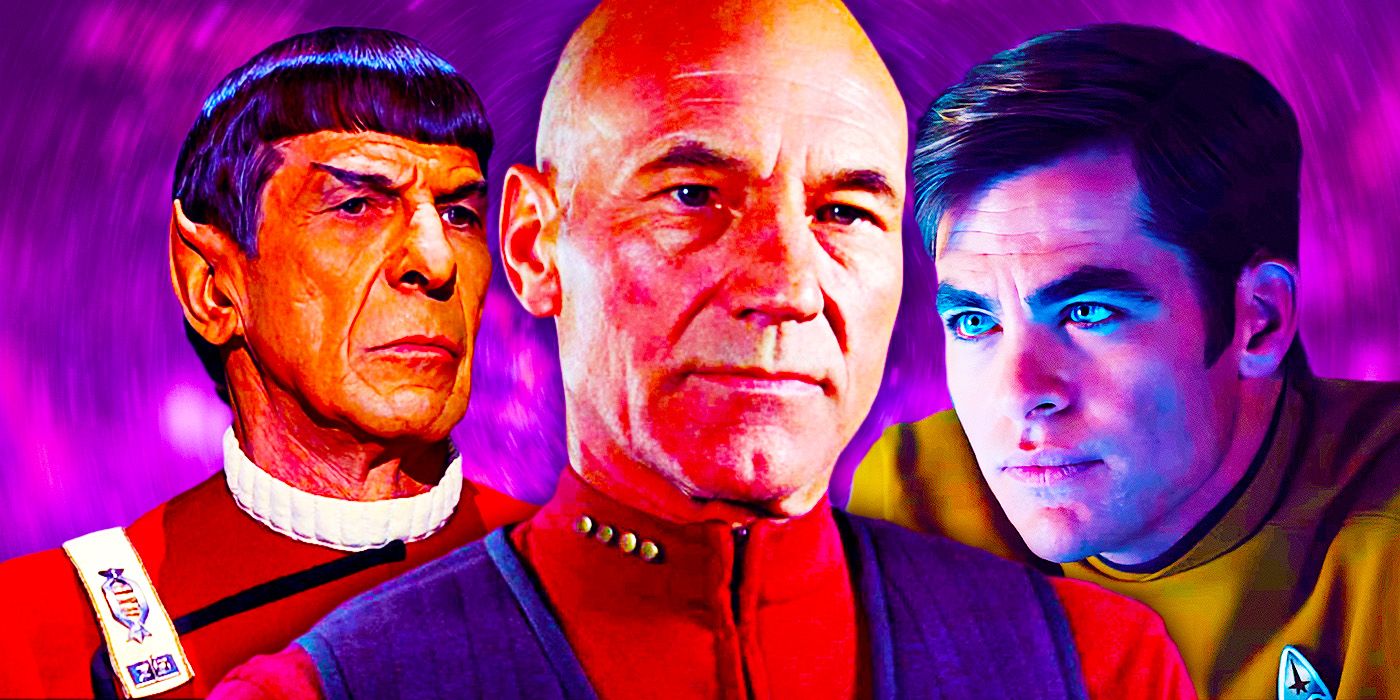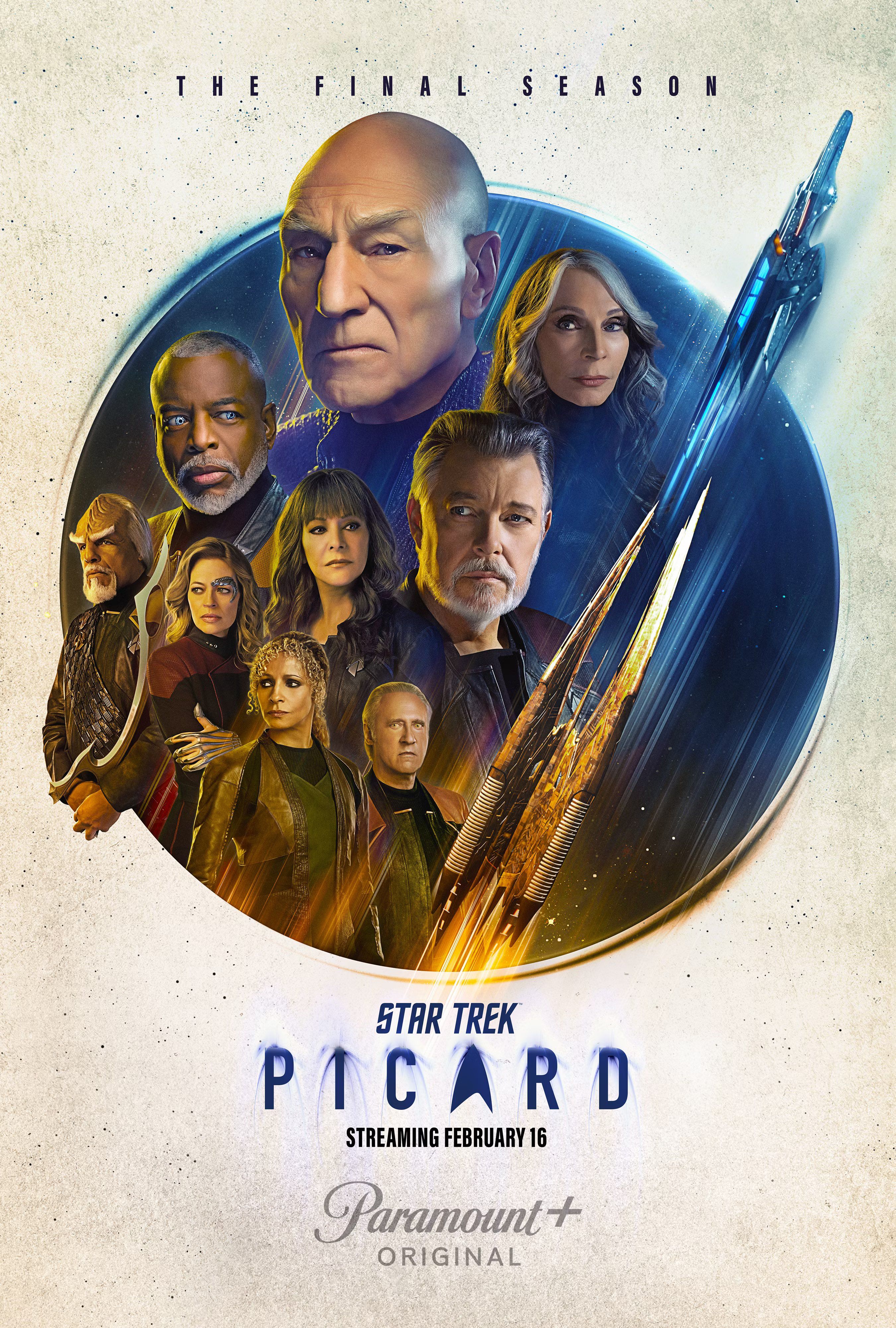8 Planets Star Trek Destroyed

Summary
- Destruction isn’t reserved for Death Stars – Star Trek has seen its fair share of planets obliterated.
- Movie scale allows for larger destruction – JJ Abrams’ version famously took out Romulus and Vulcan.
- Planets lost in the storyline – from Xindus to Ceti Alpha VI, key planets have been lost in battle.
Star Trek may not have a Death Star, but that doesn’t mean the franchise hasn’t destroyed its fair share of planets over the years. Since its beginning with Star Trek: The Original Series in 1966, Star Trek has depicted an optimistic view of the future where humanity’s main goal is exploration. Despite this, the United Federation of Planets has still made enemies who have managed to get their hands on powerful, planet-destroying weapons. A few Star Trek planets have also been accidentally destroyed by weapons or anomalies created for a different purpose altogether.
Many of Star Trek’s most devastating moments of destruction happen in the Star Trek movies, as the scale for those stories is often larger than the television series can accommodate. J.J. Abrams’ Star Trek (2009) famously destroyed Romulus and Vulcan, altering the trajectory of the Federation’s future and the lives of Captain James Kirk (Chris Pine) and Spock (Zachary Quinto) in the alternate Kelvin timeline. However, these were not the first planets Star Trek destroyed. William Shatner’s Captain Kirk and Leonard Nimoy’s Spock were the first to encounter a “machine” capable of annihilating entire planets in the classic Star Trek: The Original Series episode “The Doomsday Machine.”
Every Upcoming Star Trek Movie & TV Show
Star Trek is ending series like Discovery and Lower Decks but renewed Strange New Worlds while setting up new streaming and theatrical movies.
8 All Seven Planets In System L-370
Destroyed in 2267 in Star Trek: The Original Series Season 2, Episode 6 – “The Doomsday Machine”
When the USS Enterprise responds to a distress call from their sister ship, the USS Constellation, they find the heavily damaged ship with only one passenger still alive, Commodore Matt Decker (William Windom). The emotionally compromised Decker explains that his starship encountered a massive ‘planet-killer’ machine with the ability to destroy planets. The Constellation tried to attack the machine, but they were ineffective, and the Constitution Class starship sustained significant damage.
Commodore Decker beamed the USS Constellation’s entire crew down to a nearby planet to keep them safe, but the machine then destroyed the planet, killing all of the Constellation’s crew. The insane Decker steals a shuttle from the Starship Enterprise for a suicide run into the mouth of the machine. Although his attack causes only minor damage, it gives Captain Kirk the idea to send the Constellation into the robot, where it explodes and disables the planet-killer.
7 Xindus
Destroyed in 2033, prior to Star Trek: Enterprise
Located in the Delphic Expanse, the Xindi homeworld, Xindus, was already geologically unstable before it was destroyed during the Xindi Civil War. Prior to its destruction, Xindus was home to six different Xindi species, who were often in conflict with one another. At the height of their Civil War, the Xindi-Reptilians and Insectoids set off a massive bomb that destroyed the planet and wiped out the Xindi-Avians.
The remaining five species then spread out across the Delphic Expanse during a time that became known as the Great Diaspora. It was later that the transdimensional beings called the Guardians contacted the Xindi and told them that humanity would attack and destroy their future homeworld. This led the Xindi to launch a devastating attack on Earth in 2153, after which Captain Jonathan Archer (Scott Bakula) and the Enterprise NX-01 were sent into the Delphic Expanse.
Xindi Species | By the End of Star Trek: Enterprise Season 3 |
|---|---|
Xindi-Aquatics | Allied With Humanity |
Xindi-Arboreals | Allied With Humanity |
Xindi-Avians | Extinct |
Xindi-Insectoids | Enemy |
Xindi-Primates | Allied With Humanity |
Xindi-Reptilians | Enemy |
6 Ceti Alpha VI
Destroyed in 2267, prior to Star Trek II: The Wrath of Khan
In Star Trek: The Original Series season 1, episode 22, “Space Seed,” Captain Kirk encountered former Earth tyrant Khan Noonien Singh (Ricardo Montalban) for the first time. After Khan tries (and fails) to destroy the Enterprise, Kirk exiles him and his people to Ceti Alpha V. Although the planet was initially habitable, if somewhat harsh, the destruction of Ceti Alpha VI altered the orbit of Ceti Alpha V, rendering the planet completely inhospitable.
Although Khan reveals that Ceti Alpha VI exploded around six months after he and his people were left on Ceti Alpha V, it remains unknown what caused the planet to explode. In Star Trek II: The Wrath of Khan, Commander Pavel Chekov beamed down from the USS Reliant to Ceti Alpha V, mistakenly believing it to be Ceti Alpha VI. Khan then hijacked the Reliant and abandoned Ceti Alpha V for good.
5 Genesis Planet
Destroyed in 2285 in Star Trek III: The Search for Spock
In Star Trek II: The Wrath of Khan, Khan stole the Genesis Device created by Dr. Carol Marcus (Bibi Besch) and her team of Federation scientists. The Genesis Device could bring dead worlds and planetoids back to live, turning them into lush Class M planets capable of sustaining humanoid life. However, the Genesis Device could also be used as a weapon as its matrix replaces existing life with its own. After a final battle with Admiral Kirk and the USS Enterprise, Khan detonated the device before his death, which resulted in the creation of the Genesis Planet.
After Spock sacrificed himself to allow the Starship Enterprise to escape, his casket landed on the Genesis Planet, which brought his body back to life.
In Star Trek III: The Search For Spock, Carol and Kirk’s son, David Marcus (Merritt Butrick), was sent to investigate the Genesis Planet, which was unstable and aging rapidly because David used protomatter in the Genesis matrix. The Genesis Planet soon exploded after Admiral Kirk successfully rescued Spock and commandeered a Klingon Bird-of-Prey to escape. The Genesis Planet marks the first time Star Trek depicted a planet’s destruction on-screen.

Every Star Trek Movie Ranked (From Worst To Best)
There have been thirteen Star Trek movies over the last 40 years, but which is the boldest big-screen adventure to go where no man has gone before?
4 Praxis
Destroyed in 2293 in Star Trek VI: The Undiscovered Country
Star Trek VI: The Undiscovered Country opens with Captain Hikaru Sulu (George Takei) in command of the USS Excelsior, as the ship is hit by a shockwave from a nearby explosion. When the Excelsior investigates, they find that the Klingon moon, Praxis, has been destroyed. Sulu attempts to offer assistance, but he receives an official transmission from the Klingon High Command that the situation is under control.
Not only was Praxis the Klingon Empire’s main energy production facility, but its destruction also polluted the ozone of the Klingon homeworld, Qo’noS. Because of this, the Klingon Chancellor Gorkon (David Warner) seeks to end hostilities between the Klingon Empire and the Federation, as the Empire can no longer sustain the war. Captain Kirk and the USS Enterprise crew must then thwart a plan to sabotage the peace talks so that the Federation can enter a new era of peace with the Klingons.
3 Romulus & Remus
Destroyed in 2387 in Star Trek (2009) & prior to Star Trek: Picard

Star Trek: Picard
- Cast
- Patrick Stewart , Jonathan Frakes , Jeri Ryan , Michelle Hurd , Ed Speleers , Gates McFadden , Todd Stashwick , Michael Dorn , Brent Spiner , LeVar Burton , Marina Sirtis , Amanda Plummer , Isa Briones , Alison Pill , Santiago Cabrera , Evan Evagora , Orla Brady , John de Lancie , Whoopi Goldberg
- Release Date
- January 23, 2020
- Seasons
- 3
- Showrunner
- Michael Chabon , Akiva Goldsman , Terry Matalas
Before the sun in the Romulus system went supernova in 2387, Starfleet mounted a massive rescue effort to evacuate the planets affected by the imminent destruction of the Romulan star. However, after rogue synths attacked Mars and destroyed the rescue armada, Starfleet abandoned the evacuation efforts. Admiral Jean-Luc Picard (Patrick Stewart) had been spearheading the evacuation, and he resigned from Starfleet in protest after the rescue efforts were abandoned.
After the destruction of Romulus and Remus, the Romulans became refugees and settled on various planets, including Vashti, which had been set up as a Romulan Relocation Hub by the Federation.
According to J.J. Abrams’ Star Trek (2009), Ambassador Spock created a red matter singularity as another attempt to save Romulus. While the singularity did consume the star, it was not fast enough to stop the supernova before it reached Romulus and Remus and destroyed the planets. The Romulan Nero (Eric Bana) used the time warp created by the singularity to travel back in time, which resulted in the alternate Kelvin timeline.
2 Vulcan
Destroyed in 2258 Star Trek (2009)
While Star Trek‘s Prime Universe version of Vulcan remains intact, the Vulcan of the Kelvin timeline was destroyed by Nero after he traveled back in time to the 23rd century and created the alternate Kelvin Timeline. When Nero’s ship, the Narada, began drilling into the core of Vulcan, the Vulcan High Command sent out a distress call. Starfleet responded by sending an armada to intercept the Narada, but they were no match for Nero’s powerful 24th century ship.
The USS Enterprise, under the command of Captain Christopher Pike (Bruce Greenwood), arrived later than the other ships and futilely tried to stop Nero. When Vulcan’s destruction became inevitable, Spock (Zachary Quinto) beamed down to save the Vulcan elders, including his parents, Sarek (Ben Cross) and Amanda (Winona Ryder). While Spock was able to save many of the elders, his mother did not make it out in time and was killed when the planet imploded.
Ambassador Spock helped establish a new colony, known as New Vulcan, for the approximately 10,000 remaining Vulcans.

10 Star Trek Worlds Discovery’s AR Wall Needs To Recreate
The Star Trek franchise has a state-of-the-art AR Wall they can use to render alien landscapes. What classic Trek planets should they recreate next?
1 Kwejian
Destroyed in 3190 in Star Trek: Discovery Season 4, Episode 1 – “Kobayashi Maru”
The homeworld of Cleveland Booker (David Ajala), Kwejian was a Class M planet where the Kwejian people lived in a shielded area called the Sanctuary. When Booker went to visit his brother and nephew on Kwejian in 3190, he noticed the birds on the planet were behaving strangely. When he went to investigate, Book witnessed the destruction of Kwejian’s moon by a massive gravitational distortion which later came to be known as the Dark Matter Anomaly or DMA.
Booker returned to the USS Discovery only to witness the complete destruction of Kwejian. Following Kwejian’s destruction, the Federation and Discovery began investigating the DMA, eventually contacting its creators, Species 10-C, who were using the DMA to mine boronite and were unaware that it was causing harm. In a classic Star Trek storyline, the crew of the Discovery found a way to communicate with Species 10-C and convinced them to disable the DMA.
Star Trek: The Original Series, Star Trek: Enterprise, Star Trek: Discovery, Star Trek: Picard, & Star Trek (2009) are available to stream on Paramount+.
Star Trek II: The Wrath of Khan, Star Trek III: The Search for Spock, & Star Trek VI: The Undiscovered Country are available to stream on Max.






